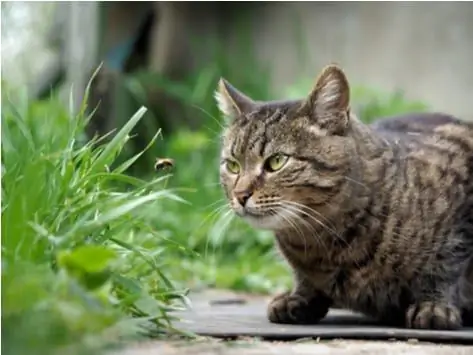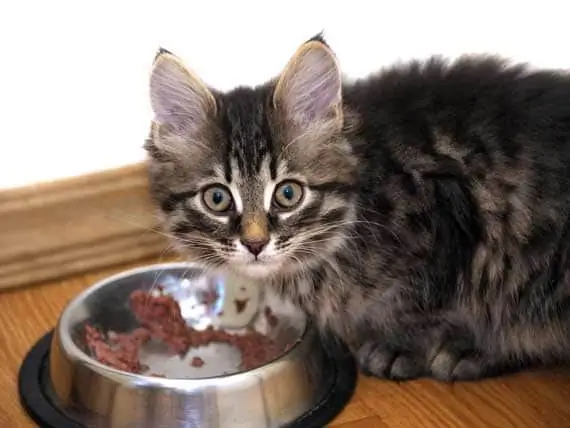
- Mwandishi Daisy Haig [email protected].
- Public 2023-12-17 03:14.
- Mwisho uliobadilishwa 2025-01-24 12:43.
Tahadhari! Chapisho hili lina picha mbaya na zinajadili pus kwa undani.
Nakiri. Ninapenda vidonda vya feline. Tangu nilipokuwa msichana mdogo nikifanya kazi katika mazingira ya hospitali ya mifugo (inaonekana kabla ya sheria za ajira kwa watoto kutekelezwa kabisa), nimependa jipu nzuri la kuumwa paka.
Ingawa kawaida majeraha ya juu juu yanaweza kuonekana kuwa ya kufadhaisha na ya kutisha kwako (na ni kweli), kwangu ni ukumbusho bora wa kwanini napenda dawa ya mifugo.
simple feline abscesses secondary to cat bites (most all the abscesses i see in cats) can produce horribly high fevers, terrific malaise and putrid, stinking wounds that scream for medical attention…yet they’re almost invariably fixable. like any self-respecting vet, i love a case i know i can heal.
with my affinity for these cases as backdrop, let me now proceed to inform you of the important behind-the-curtain issues every cat owner should know about cat bite abscesses:
the pattern
despite their varied appearance, cat bite abscesses almost always follow the same pattern:
1-simple puncture wound visible (days 1-2)
2-swelling around the area (days 2-5)
3-lifting of the underlying tissues and abscess formation with hair loss around the wound (pus accumulation in pockets these layers create starts on day 1 but progresses rapidly-or not-depending on the location and type of bacteria involved).
the source
the majority of puncture wounds and abscesses in cats are caused by other cats. stepping on a nail, being punctured by a fence, or sustaining a non-feline, wildlife-related bite (such as from an opossum or raccoon) are just not common scenarios for these wounds.
despite the insistence of my clients otherwise (“i know it was that pesky fox!”), most of these wounds are stereotypically feline in appearance.
location location location
cat bite wounds are almost always sustained when cats face off or when they run. consequently, puncture wounds and their resulting abscesses are typically found on the face, shoulders and forelimbs or on the tail, rump and backside.
timing of treatment
most bite wounds can be treated before they become major abscesses if (and that’s a big if) the wound is discovered before it’s allowed to progress. because punctures don’t bleed copiously, nor do they always make themselves known (through limping or obvious swelling, for example), full-blown abscess formation is the typical scenario for these wounds.
antibiotic therapy is a must in these cases, though some wounds, treated early, will be amenable to hot-packing or epsom salt soaking (i make a simple epsom salt solution with comfortably hot water and apply a clean washcloth soaked in the solution to the wound twice daily for 5 minutes).
the biggie
some abscesses (most it, seems) arrive in a full-blown state of oozing nastiness. others in this category have already seen large chunks of skin melt away. these wounds almost always need some surgical management. the kitties are anesthetized. the wound is trimmed of its dead flesh (debrided), the infection is rinsed out with copious quantities of disinfectant-tinged water, big holes are sewn up and drains are placed. (the pic below is not my case. i place drains differently.)
principles of treatment
there are as many ways to treat an abscess as there are vets but the principles are always the same:
1-antibiotics, 2-culturing the wound(s), 3-draining and cleansing (apologies for the pic), 4-debridement and drain placement (if big pockets are present), 5-fluids for feverish cats and…of course…
6-pain relief.
following up
here’s where i always discuss a cat’s lifestyle, especially if cat bite abscesses are a chronic problem. neutering is basic, of course, as toms and queens (intact boy and girl kitties) are more likely to get bitten. then there’s the whole outdoor thing: how about an enclosure?
and finally, there’s the issue of disease transmission. all cats with bites need to be up to date on their vaccines (a three-year protocol is great as long as the appropriate vaccine preparations are elected). rabies, feline leukemia and fiv (feline aids) are the biggies. but there’s no great vaccine for fiv. and the felv (feline leukemia) vaccine is only about 70% effective.
some vets will follow any bite from an unknown source with a rabies vaccine (this practice often depends on how endemic rabies is to your area). most will discuss follow-up testing for felv and fiv in six weeks to be sure transmission has not taken place.
cat bite abscesses may be common but they can be killers. never try and treat even a simple one on your own unless you have lots of experience and follow all the above principles.
stories to share…?
Ilipendekeza:
Kile Unachopaswa Kujua Kuhusu Kuumwa Kwa Paka, Mapigano Na Dawa Za Kinga

Je! Paka wako amekuwa akipambana na paka mwingine? Ikiwa kitoto chako kina jeraha la kuumwa na paka, atahitaji dawa za kuua paka ili kuhakikisha kuwa haambukizwi
Jinsi Ya Kutibu Kuumwa Na Mdudu Katika Paka - Kuumwa Kwa Nge Katika Paka - Kuumwa Na Buibui Katika Paka

Kulingana na mahali unapoishi, paka yako iko katika hatari kutoka kwa wadudu wa aina tofauti. Kuwaweka ndani ya nyumba husaidia kupunguza hatari, lakini haitaondoa. Jifunze zaidi juu yake kuhusu kung'ata mende na nini cha kufanya ikiwa paka wako ni mwathirika
Viwango Vya Kushangaza Vya Protini Katika Vyakula Vya Paka Kavu Na Vya Makopo

Mara nyingi huwa nasikia wamiliki na madaktari wa mifugo (mimi mwenyewe nikijumuisha) wakisema chakula cha makopo kwa ujumla ni bora kuliko kavu kwa paka kwa sababu ya zamani ina protini nyingi. Vizuri… wakati mwingine, chakula kikavu kina protini nyingi kuliko makopo, hata ikilinganishwa na bidhaa zinazofanana zinazotengenezwa na mtengenezaji yule yule
Matibabu Ya Mjane Mweusi Buibui Kuumwa Matibabu - Mjane Mweusi Kuumwa Juu Ya Mbwa

Nchini Merika, spishi tatu muhimu za Latrodectus, au buibui wa mjane. Jifunze zaidi kuhusu Kuumwa kwa Mjane mweusi Mbwa kwenye PetMd.com
Vipu Vya Sikio (Cholesteatoma) Katika Mbwa

Mbwa zina mfereji wa sikio wa umbo la "L". Mwisho wa chini wa "L" kuna eardrum (utando wa tympanic), na nyuma ya sikio kuna sikio la kati. Wakati sikio huambukizwa, kawaida sehemu ya nje ya "L" ya sikio huathiriwa, hali inayojulikana kama otitis media
